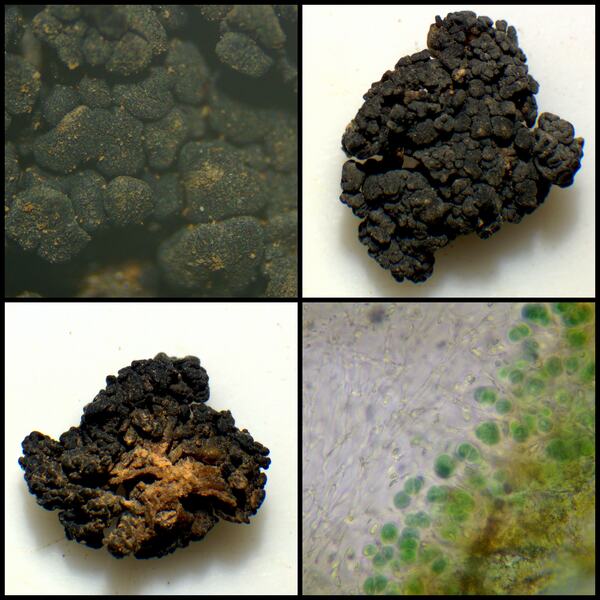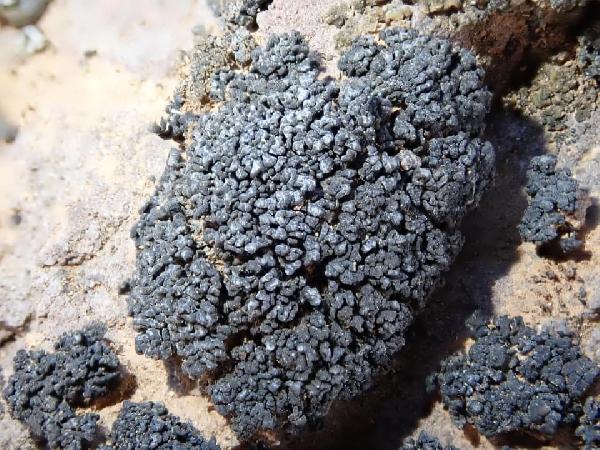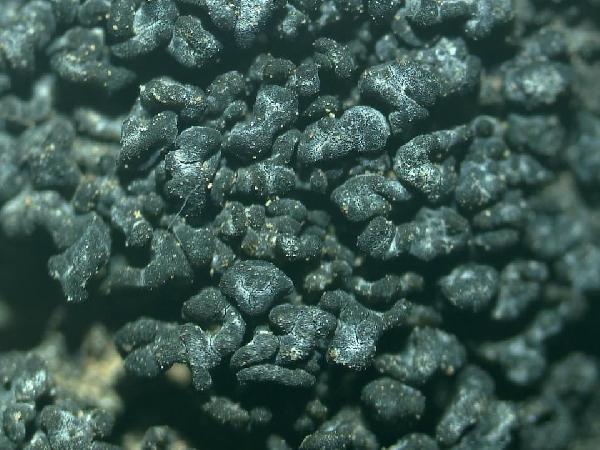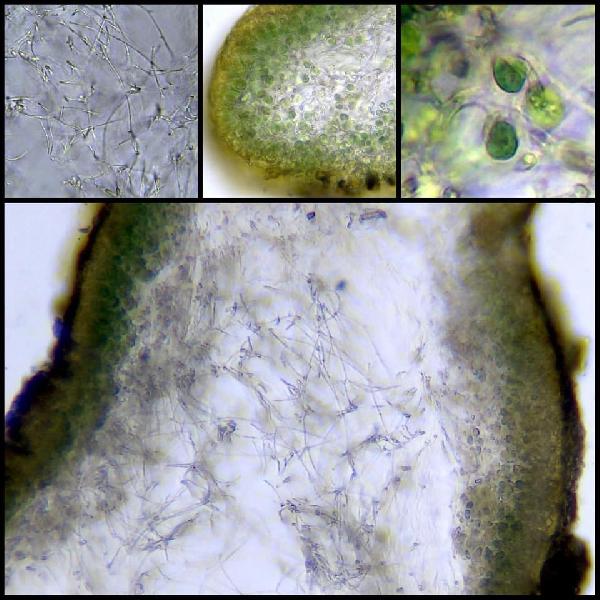Peccania cerebriformis Henssen & Büdel
Int. J. Mycol. Lichenol., 1, 3: 263, 1984
Synonyms:
Distribution:
Description: Thallus foliose-subsquamulose, peltate, attached by a single central strand of rhizohyphae, black when dry, dark olive-brown when wet, the squamules up to 5 mm wide, 2.5-3 mm high, with erect, densely crowded, flattened, rounded, smooth, sometimes apically thickened lobules which give the thallus a subcerebriform appearance. Thallus ecorticate, the peripheral part 40-60 μm thick, with a loose network of anticlinally oriented hyphae enclosing the photobiont, the inner part with an irregular, 150-200 μm thick axial strand made of 2-3 μm thick, longitudinally oriented hyphae. Apothecia terminal to submarginal, at first urceolate then clearly lecanorine, 0.6-1 mm across, round to irregular in outline, with a dark brown to black, slightly concave to flat disc and a thick, prominent thalline margin. Proper exciple absent; epithecium yellowish brown, poorly differentiated; hymenium colourless, but with conspicuous brown to red-brown patches in the upper third, 70-95 μm high, I+ blue; paraphyses branched and anastomosing, 2-3.5 μm thick, constricted at septa, clearly capitate; hypothecium yellowish brown, 35-55 μm high. Asci (4-)8-spored, Asci 8-spored, broadly clavate, thin-walled, with a distinct gelatinose, amyloid outer cap, but no apical dome, Peccania-type. Ascospores 1-celled, hyaline, globose to broadly ellipsoid, 9-14 x 6-10 μm. Pycnidia terminal or marginal, immersed, globose to pyriform, unilocular, up to 200 μm across. Conidia 1-celled, hyaline, thread-like, curved, 20-30 x c. 1 μm. Photobiont cyanobacterial, chroococcoid, with single or paired 8-12 x 6-11 μm large cells often penetrated by haustoria, surrounded by a yellowish brown gelatinous sheath which tends to become thinner and paler in internal parts. Spot test: all negative. Chemistry: without lichen substances. Note: a species described from the Canary Islands (Lanzarote), also known from Algeria, Morocco and SE Spain, growing on steeply inclined, sunny surfaces of calcareous or basic siliceous rocks with water seepage after rain; to be looked for in Mediterranean Italy.
Growth form: Squamulose
Substrata: rocks
Photobiont: cyanobacteria, coccaceous (e.g. Gloeocapsa)
Reproductive strategy: mainly sexual
On otherwise dry surfaces with short periods of water seepage after rain

Predictive model
Growth form: Squamulose
Substrata: rocks
Photobiont: cyanobacteria, coccaceous (e.g. Gloeocapsa)
Reproductive strategy: mainly sexual
On otherwise dry surfaces with short periods of water seepage after rain

Predictive model
 INDEX FUNGORUM
INDEX FUNGORUM
 GBIF
GBIF






